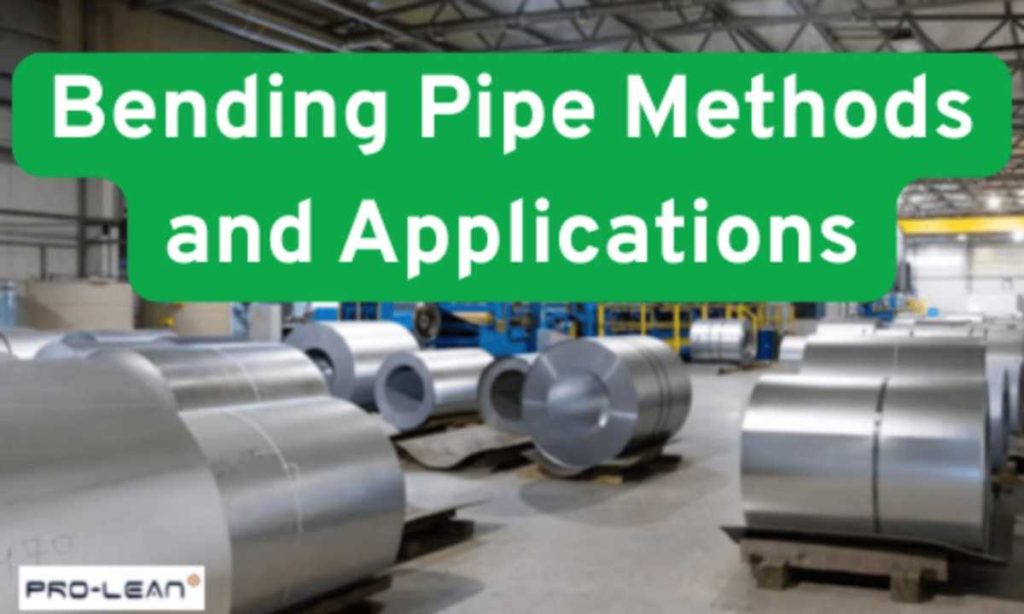
Bending Pipe Methods and Applications
Ever wondered how the marine system operates with a flawless hydraulic system? The answer lies in the precision of bending pipes. The essential process allows the pipes to fit into existing systems to ensure efficiency and reliability.
However, there are multiple pipe bending methods like compression bending, rotatory draw bending, roll bending, etc. Bending galvanized pipes requires precision and proper technique to prevent coating damage and ensure longevity.
From the automotive to the construction and medical industries, bending pipes play a critical role in shaping innovative solutions. At ProleanTech, we deliver precision pipe bending solutions for diverse industry needs. We understand that proper bending requires both technical knowledge and specialized equipment.
This guide explores pipe bending fundamentals, methods, applications, and best practices. Learn why ProleanTech is your trusted partner for all pipe bending requirements. Our dedication to quality and precision makes us the preferred choice for complex bending challenges across industrial sectors.
What is Pipe Bending – An Overview
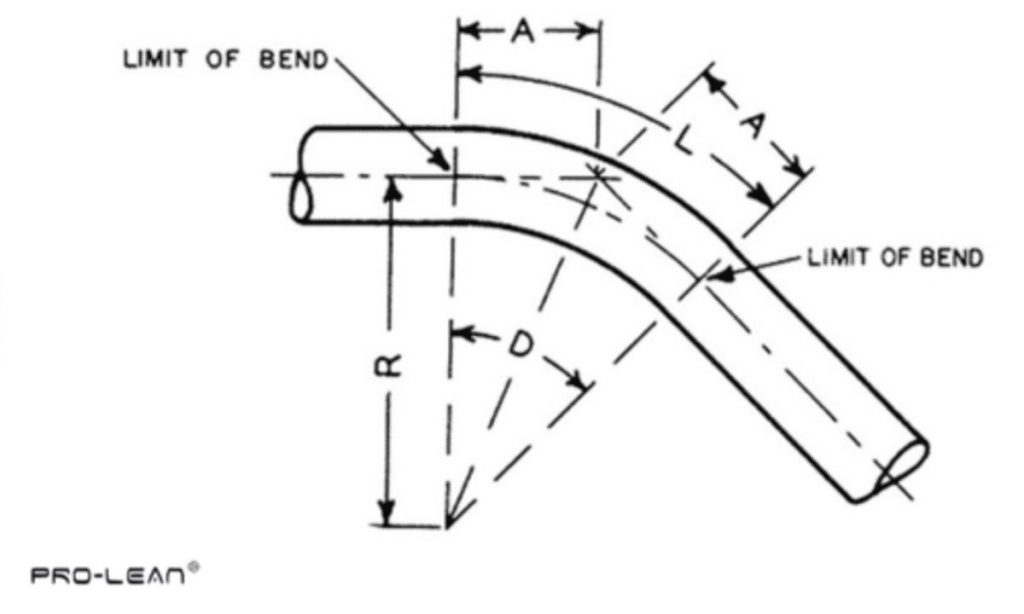
Pipe Bending Diagram
Before getting into the complex stuff, let’s first understand pipe bending. Simply put pipe bending changes the shape of metal pipes to achieve a specific angle and shape.
Pipe bending primarily aims to shape pipes for efficient routing while maintaining structural integrity and functionality.
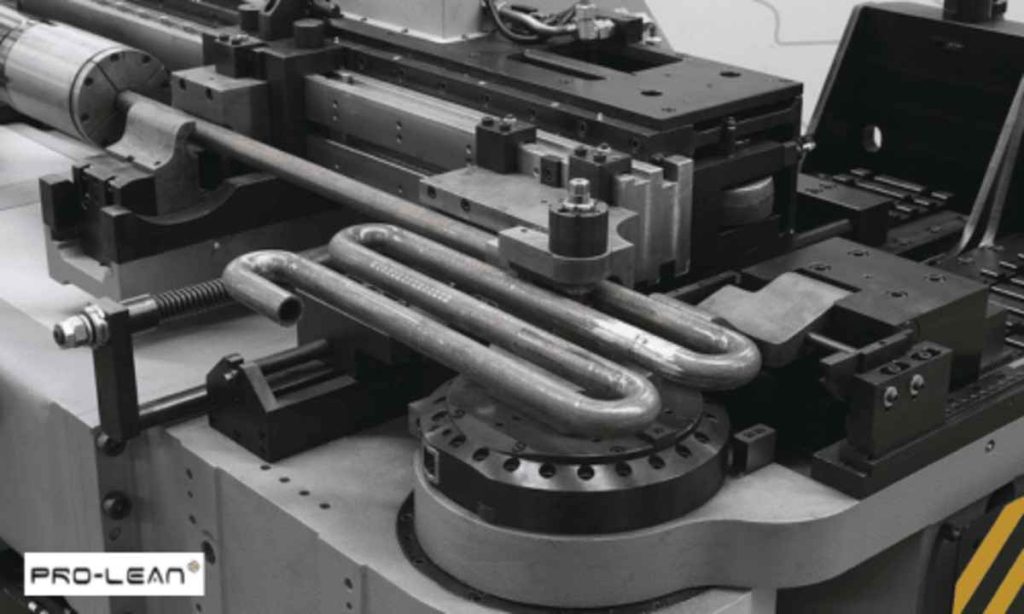
Precision Metal Tube Bending Machine
Bending becomes much easier with CNC tube bending machines as you can also control the bend angles and specify the tools. It offers a range of bending solutions that you can imagine. Well, that’s the power of the machine, no? Visit our Quote page-upload your files here to use the bending pipes per your industry needs.
What is the formula for bending pipes?
Bending pipes is not a one-size-fits-all thing. You need a formula to bend pipes in different degrees. So, here is how you can estimate at which degree the tube should bend:
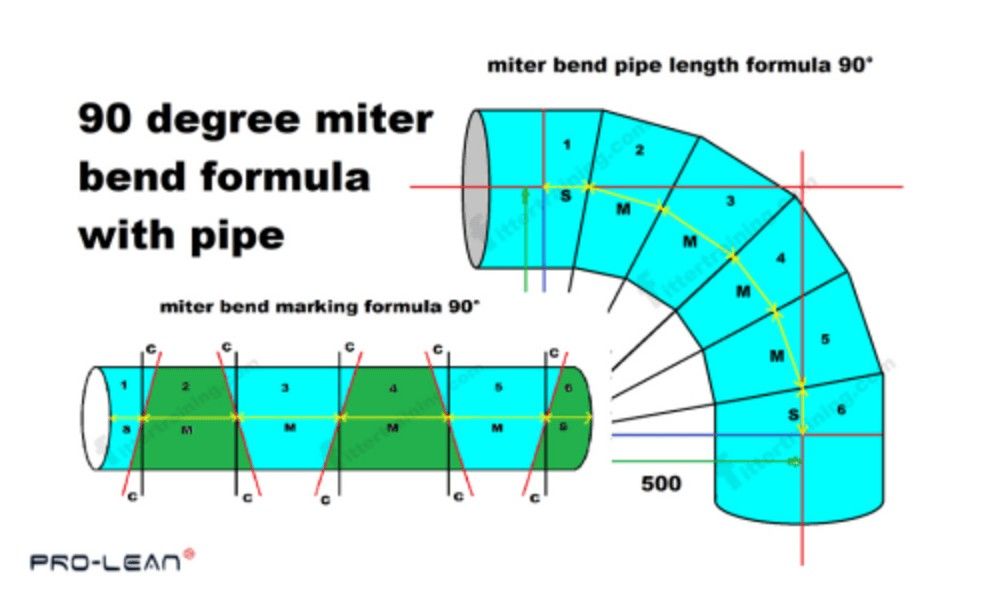
90 Degree Miter Bend Pipe Formula Diagram
90-degree bends: Multiply the radius of the bend by 1.57 (Radius is measured to the center of the pipe) To find the length of a 90-degree bend.
180-degree bends: Multiply the radius of the bend by 3.14 to find the length of a 180-degree bend.
All other bends: Multiply the radius of the bend by the induced angle and then multiply the product by the constant 0.01745. The result is the length of the curved section.
Now that we know what pipe bending is, scroll down to learn about different types of bending so you can choose one according to your industry requirements.
Try Prolean Now!
What are the Different Kinds of Pipe Bending?
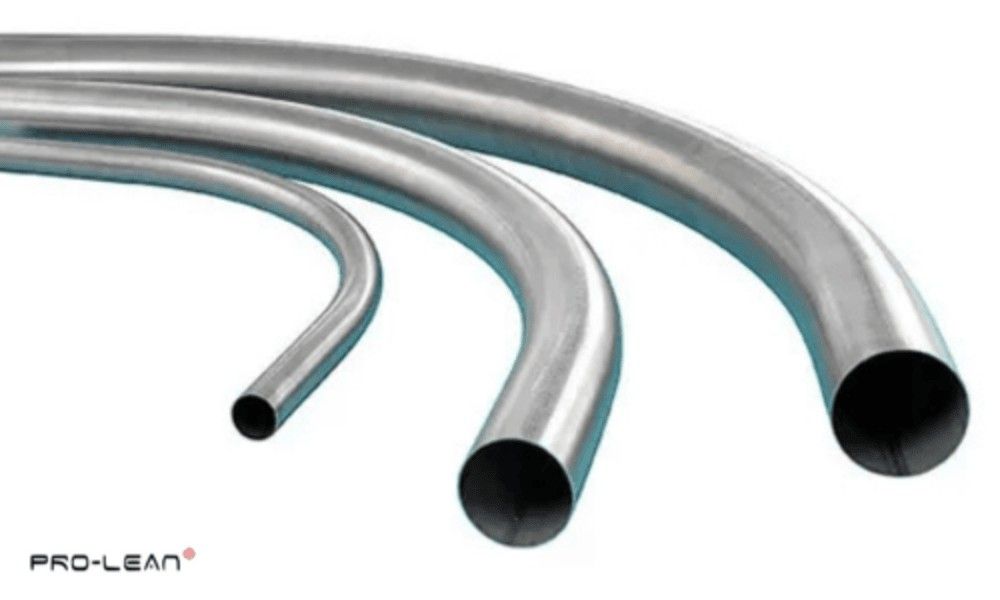
Curved Stainless Steel Pipes
There are different types of bending processes depending on how you’re going to use the pipe or tube. But broadly, there is cold bending and hot bending.
As the name indicates, cold bending requires physical force to bend the pipes and tubes into desired shapes. On the other hand, hot bending uses heat to change the shape.
Here are different ways you can bend pipes using the cold bending method:
1. Compression Tube Bending
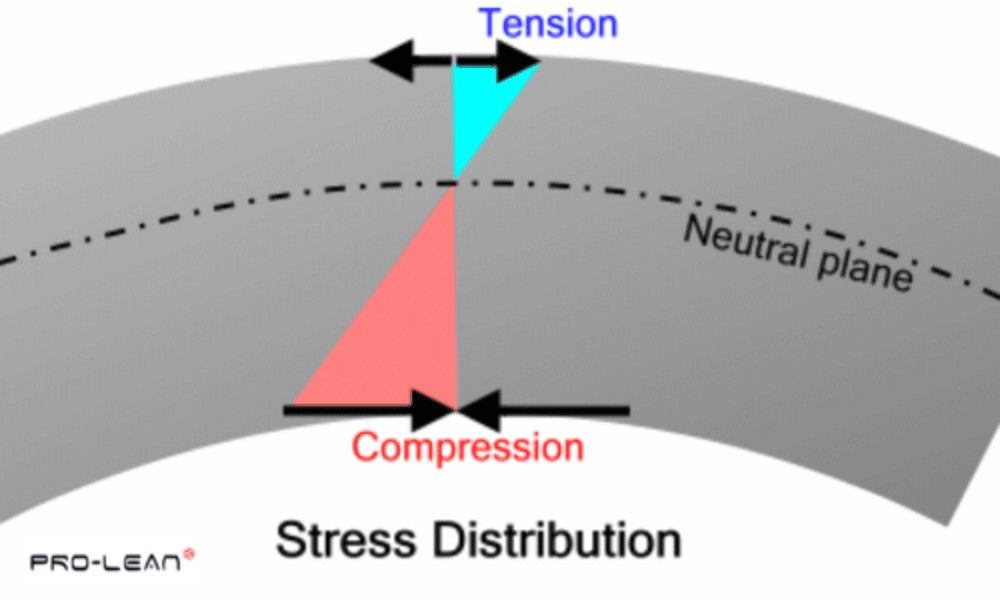
Stress Distribution in Bending
The first one on the list is compression bending. It involves using a pushing force to bend the pipes in the desired shape. For bending the tubes and pipes using this method, you need a bend die to apply pressure on the pipe while the clamp die keeps the pipe in place. The wiper dye makes sure that there is no deformation in the tube and pipe while bending.
One of the advantages of compression tube bending is the simplicity of the process. Besides that, it’s a versatile process that does not require complex tooling. You can achieve precise contour with this bending process. Nevertheless, its simplicity limits its usage, and you can’t use this bending method for complex processes.
2. Rotary Draw Bending
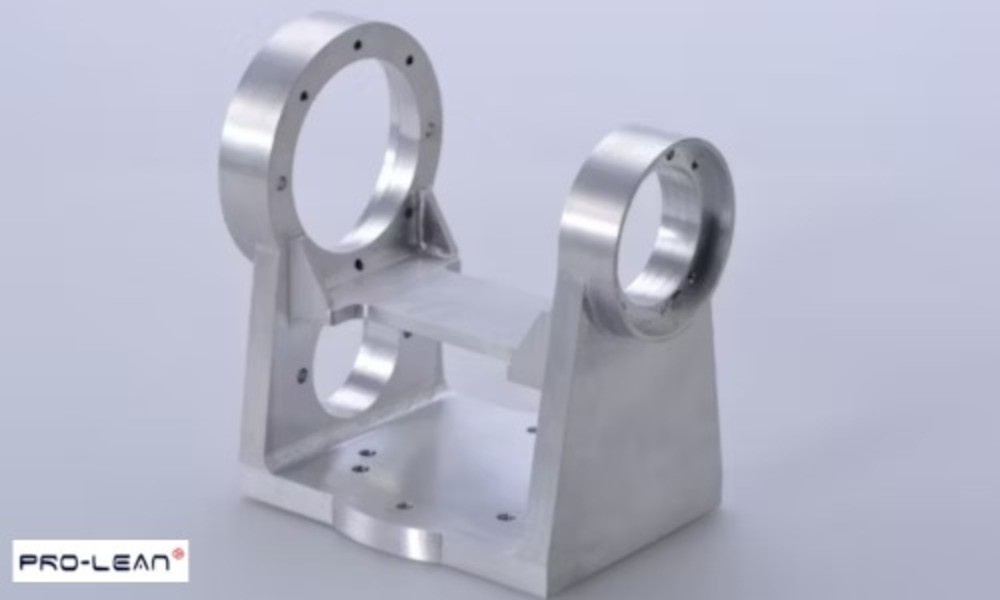
Rotary draw bending
It is generally used to bend Magnesium and Aluminum. The process is quite simple.
The pipe is clamped into a bending machine with a die that matches the bending radius. As the bending die rotates, it draws the pipe around its contour. The machine controls the angle and radius of the bend, ensuring uniformity across multiple bends.
The rotatory draw bending method is more precise, and you’ll get the same radius as the pipe. Due to high accuracy, this bending process is common for making structural frameworks.
3. Roll Bending
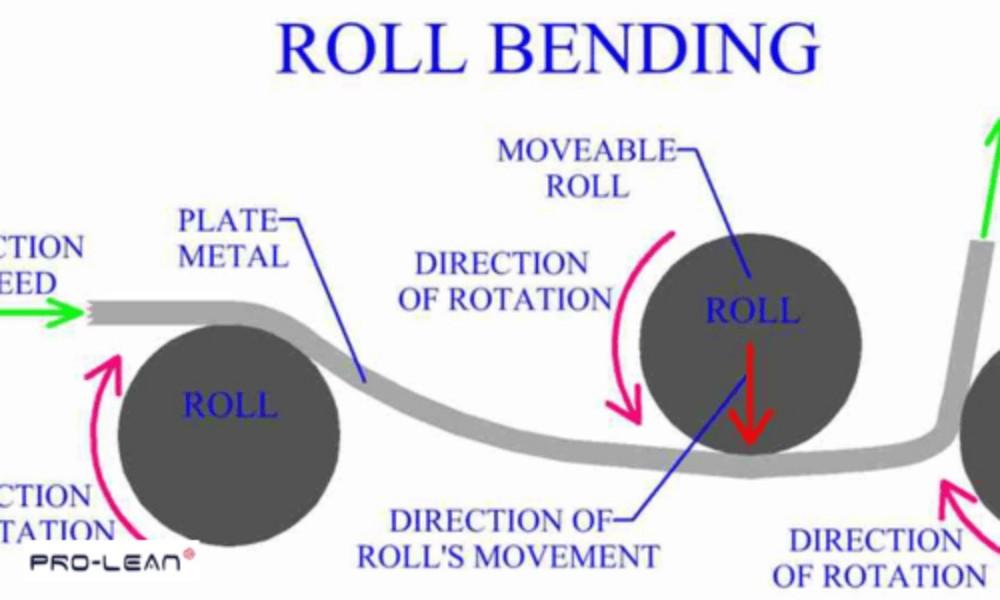
Roll Bending Process Diagram
Roll bending is ideal for pipes with large radii, and what makes it perfect is that roller machines continuously move through the process.
The pipe passes through three rollers placed in a pyramid position that apply pressure to shape the material into the desired curvature. Sometimes, the upper one rolls while the other two remain static, and vice versa.
The roll bending is limited to thin-walled metals like stainless steel and aluminum. You can’t bend the thick-walled pipes.
4. Mandrel Tube Bending
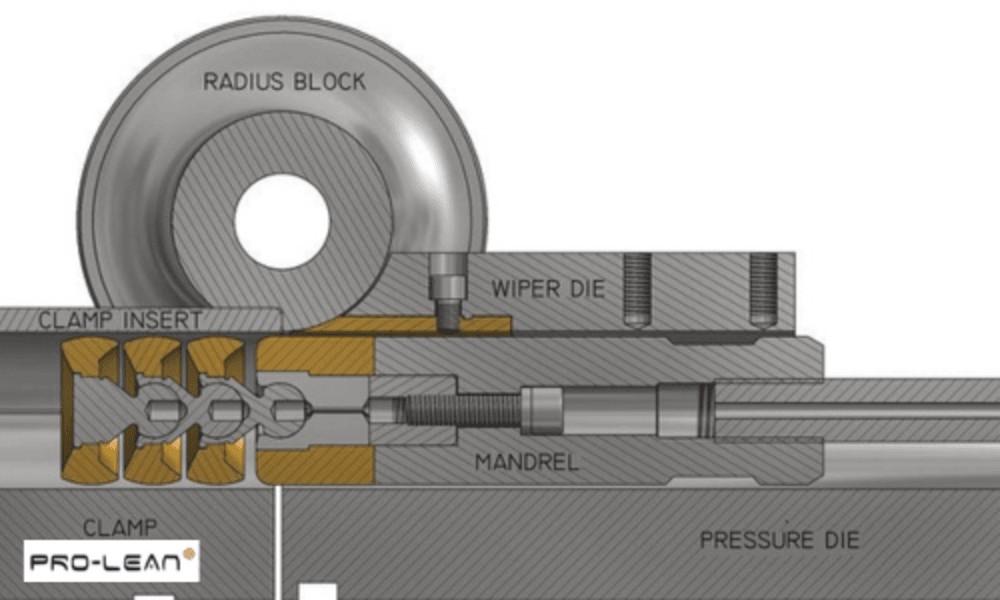
Draw Bending Process
In mandrel tube bending, you achieve the desired bend by inserting a rod in the pipe, especially one with thin walls.
This rod is flexible as it changes comfortably into the shape of the contour. This allows the rotatory bending machine to achieve the directional bend without deforming the shape of the pipe.
Mandrel tube bending offers high precision and preserves the cross-sectional area of pipes. Moreover, it ensures structural integrity after bending. However, it’s a time-consuming process.
5. Heat Induction Bending

Induction Heating in Action
Although there is slight variation in the different methods of hot bending, all are forms of induction bending.
So, how does heat-induction bending work?
This bending pipe method involves heating the pipe using an induction heating coil and applying the pressure in the desired shape. Unlike the cold bending method, you need little to no pressure, and there’s no need for a mandrel or additives to avoid distortion.
The key advantage of heat-induction bending is that it offers smooth bending without deforming the shape. The pipe’s structural integrity remains intact as heat only applies to the desired area. This method is perfect for high-strength metals prone to cracking under mechanical stress.
However, the process requires experienced individuals who manage the heating and cooling phases.
Read out the complete guide to sheet metal bending to know more details.
KEY FACTORS
Here are the key factors you must keep in mind when using the heat-induction pipe bending method:
- Control the temperature to avoid weakening the material.
- Apply localized heating to keep the pipe unaffected.
- Heating and cooling of metal is a time-intensive process.
Try Prolean Now!
Pipe Bending Methods & Their Applications
Here is a quick overview of pipe bending methods along with their applications:
| Bending Method | Description | Advantages | Disadvantages | Applications |
| Compression Bending | The pipe is clamped and compressed around a bending die. | – Simple and low cost – Ideal for softer materials like copper |
– May cause ovality – Limited to larger radius bends |
Plumbing, HVAC systems |
| Rotary Draw Bending | A precision method using a mandrel and die for accurate and repeatable bends. | – Precise and consistent – Handles tight radii well |
– Equipment is expensive – Slower than other methods |
Automotive exhausts, handrails |
| Roll Bending | Three rollers gradually form the pipe into a large-radius curve. | – Ideal for large-radius bends – Can bend thicker materials |
– Not suitable for tight or small-radius bends | Structural frameworks, large-scale fabrication |
| Mandrel Bending | A mandrel is placed inside the pipe to maintain its shape during bending. | – Prevents collapse and distortion – Suitable for tight-radius bends – Great for thin walls |
– Higher cost and slower process – Requires specialized equipment |
Aerospace, automotive, precision piping |
| Heat Induction Bending | Heat softens the pipe locally before bending, reducing stress on the material. | – Works well with thick-walled pipes – Suitable for large diameters and smooth bends |
– Expensive setup – Requires safety precautions |
Oil and gas pipelines, industrial piping |
At ProleanTech, we offer CNC machining for accurate metal cutting, providing high efficiency. Contact us now to learn more about our services.
Now that we know the different pipe bending methods, let’s look at the general pipe bending rules.
What is the Pipe Bending Rule?
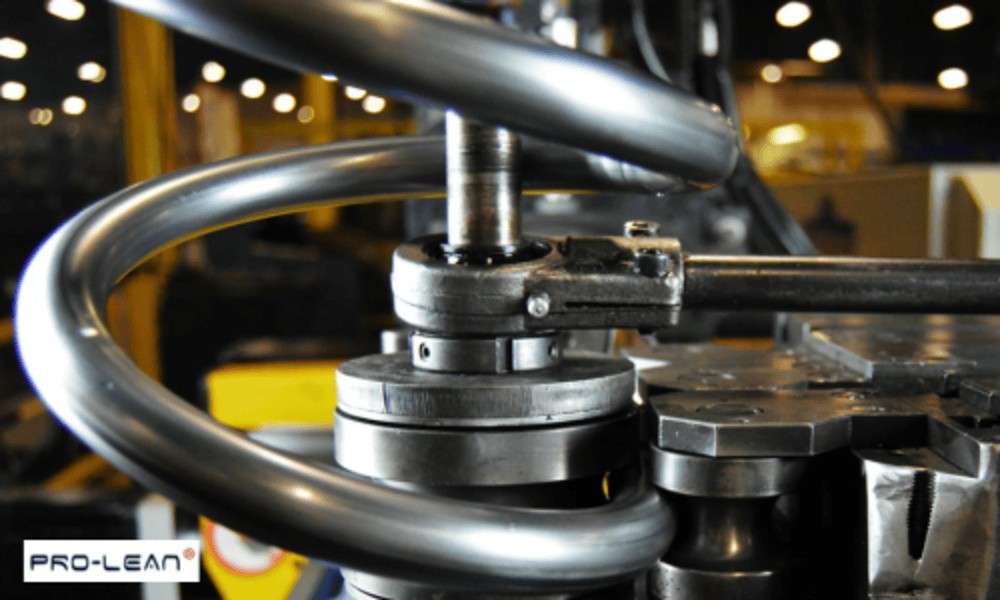
Metal Tube Bending in Industrial Setting
Although with the methods mentioned above, you can bend the metal pipes into whatever shape you want., however, there are general pipe bending rules:
- The minimum bending radius should be 2-2.5 the od of your tube
- The shortest straight distance must be 1.5-2 times the od
- The bend radius is twice the pipe’s outer diameter
Knowing the bending pipes rule makes it easy to bend pipes and tubes. Scroll down to find the applications of pipe bending in different industries.
Applications of Pipe Bending
Pipe bending is a crucial process for manufacturing structures. Here are the applications that make it an unavoidable process in different industries:
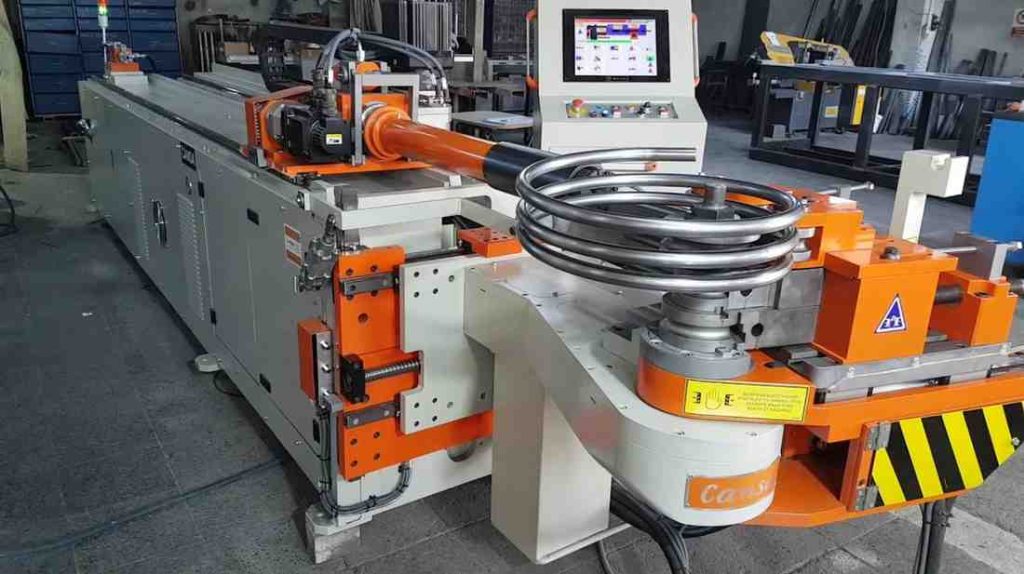
Precision Pipe Bending for Industrial Applications
In the automotive sector, pipes are bent for exhaust routing and alignment of parts with engine compartments
The aerospace industry requires high-precision bends for routing fluid systems. Besides this, bent tubes are required for the environmental control system. For all these purposes, bending pipes are a non-negotiable item.
In the construction industry, bending creates aesthetically pleasing structures. The chimneys and roofing structures require bent pipes and tubes to ensure structural integrity.
Additionally, bent pipes and tubes have applications in the medical industry, the oil and gas sector, and the marine industry for uninterrupted material flow.
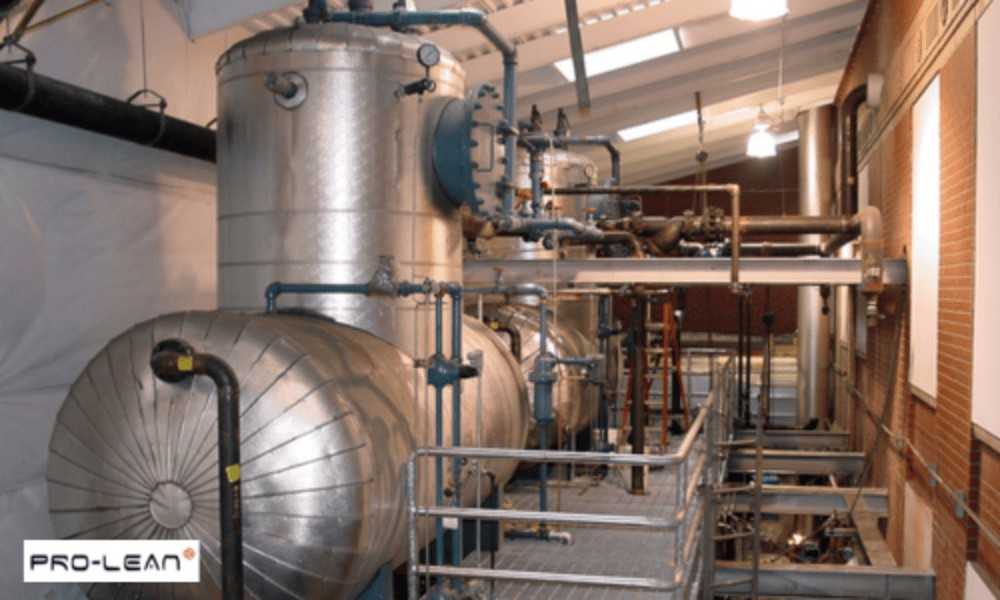
Industrial Steam System for Pipe Bending
For example, power plants use bent pipes for steam distribution and cooling circuits.
Production facilities use the bending process in the medical and pharmaceutical industries. Moreover, the medical equipment requires precise bending and changes in structure. Meanwhile, the marine industry uses bent structures to route hydraulic systems properly. It’s also used in aquatic systems for efficient exhaust routing.
Sheet metal fabrication has applications in these industries in addition to pipe bending. Unlock potential with custom sheet metal for aerospace, automotive, construction, electronics, and renewable energy sectors.
Best Practices For Precision in Pipe Bending
Before bending pipes and tubes, following the prerequisites to ensure high efficiency is a MUST. So, here are the best practices for precision in pipe bending:
- Make sure the pipe surface is clean because debris and oil on the surface can cause uneven bending.
- Make sure you’ve marked the pipe for bending locations.
- Ensure that you accurately calculate the bend allowance and bend deduction.
- Maintain the uniform speed and force while bending the tubes and pipes to achieve high-quality bends.
- Continuously monitor and adjust the speed and force of bending.
- After bending, several inspections are performed to ensure that the end product meets the specifications.
Wrap Up
That’s all you need to know about pipe bending and the different methods used to achieve them. Each bending technique has its advantages and drawbacks; therefore, their applications vary. Preparing the metal pipes, calculating the bending measurements, and checking the quality are necessary to achieve flawless results. These measures improve the final output and ensure that nothing gets wasted.
ProleanTech offers comprehensive solutions for pipe-bending operations. From CNC machining to sheet metal and 3D printing, you can maximize efficiency and precision. Visit our website to discuss with experts on CNC machining and our sheet metal bending services. You can get 100+ material option grades, including metal and plastic.
FAQs
Q1. What method do machinists use to bend metal tubing?
Machinists use compression bending, rotatory bending, and heat-induced bending, to name a few, to bend the metal tubing. However, the most commonly used method is compact bending, as it’s simple and versatile.
Q2. How to bend pipe?
To bend a pipe, you must apply mechanical force to reshape it to the desired shape and angle. You can mold the pipes and tubes with cold or heat-inducing bending. Each of these methods offers a different level of precision and, therefore, has various applications.
Q3. Which pipe bending method is the simplest?
Compression tube bending is considered the simplest and easiest method for pipe bending. It involves bending a pipe against a die to create large-radius curves. It is a quick pipe-bending method, and that’s why it has multiple applications.
Q4. What is the standard for pipe bending?
The standard for pipe bending varies depending on the industry, material, and application. However, two commonly referenced standards are ASME B31.1 and ASME B31.3. These standards regulate pressure piping systems, outlining the minimum bend radius and tolerances required to maintain structural integrity and reliable performance.



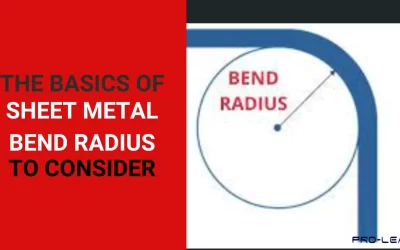
0 Comments